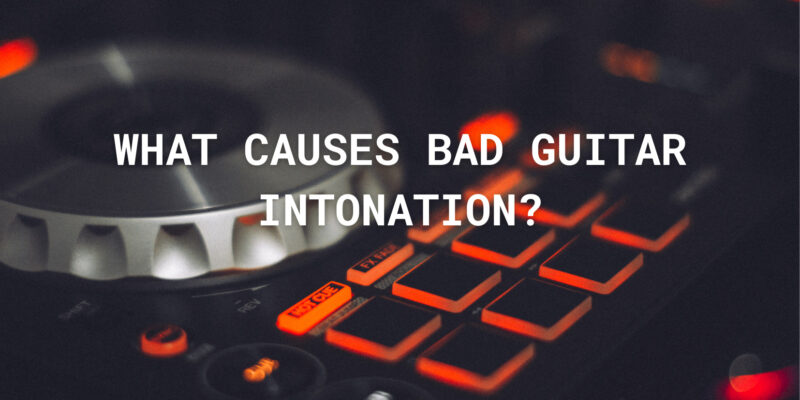Bad guitar intonation can be a frustrating obstacle for guitarists, affecting the instrument’s ability to stay in tune and produce harmonious sounds across the fretboard. In this article, we’ll explore the most common causes of bad guitar intonation and provide solutions to help you diagnose and address these issues effectively.
Understanding Intonation Issues:
Intonation refers to the accuracy of the pitches produced by your guitar at different fret positions. When a guitar has proper intonation, the notes played on any fret should be in tune with the corresponding notes on the chromatic scale. This ensures that chords and melodies sound harmonious and in tune across the entire fretboard.
Common Causes of Bad Guitar Intonation:
- String Quality and Age: Old or worn-out strings can lose their intonation stability and produce inaccurate pitches. Ensure that you have high-quality, fresh strings on your guitar.
- String Tension: Different string gauges have varying levels of tension for a given pitch. Using strings with incorrect tension for your guitar’s setup can affect intonation.
- Nut Slot Issues: Incorrectly cut or worn nut slots can lead to intonation problems. The strings should sit properly in the nut slots without binding or excessive clearance.
- Fret Condition: Uneven frets, worn frets, or frets with sharp edges can impact intonation by altering the contact points between the strings and the frets. Fret issues can cause notes to buzz or fret out.
- Saddle Position: The saddle on the guitar’s bridge must be adjusted correctly for accurate intonation. Incorrect saddle positioning can lead to sharp or flat notes.
- Environmental Factors: Guitars are sensitive to changes in environmental conditions such as humidity and temperature. Fluctuations in these conditions can impact the guitar’s setup, including intonation.
Diagnosing and Addressing Bad Guitar Intonation:
To diagnose and address bad guitar intonation, follow these steps:
- String Quality: Ensure that you have high-quality, fresh strings on your guitar. Old or worn strings should be replaced to improve intonation.
- Tune Properly: Before addressing intonation, make sure your guitar is accurately tuned using an electronic tuner.
- Nut Slot Check: Examine the nut slots for each string. Ensure that the strings are seated correctly in the slots and that there are no burrs or obstructions affecting their movement.
- Fret Check: Play each fret along the strings and listen for buzzing or muted notes. If you notice issues, such as uneven or worn frets, consider having your guitar’s frets professionally leveled and dressed.
- Saddle Adjustment: To correct intonation, you may need to adjust the saddle position. Consult your guitar’s manufacturer or a professional luthier for guidance on how to make the adjustment correctly.
- Environmental Conditions: Store your guitar in a stable environment with consistent humidity and temperature to minimize the impact of environmental factors on intonation.
Professional Assistance:
If you’ve attempted troubleshooting and are still experiencing bad guitar intonation, it’s advisable to seek the assistance of a professional luthier or guitar technician. They have the expertise and tools needed to diagnose and correct intonation issues accurately.
Conclusion:
Bad guitar intonation can be a hindrance to your playing experience, but with careful diagnosis and the appropriate adjustments, you can improve intonation accuracy and enjoy a harmonious and in-tune guitar. By addressing issues related to string quality, tension, nut slots, fret condition, saddle position, and environmental factors, you can ensure that your instrument performs at its best. Don’t hesitate to seek professional assistance if needed to optimize your guitar’s intonation.

